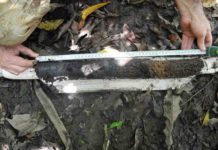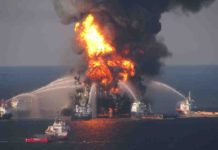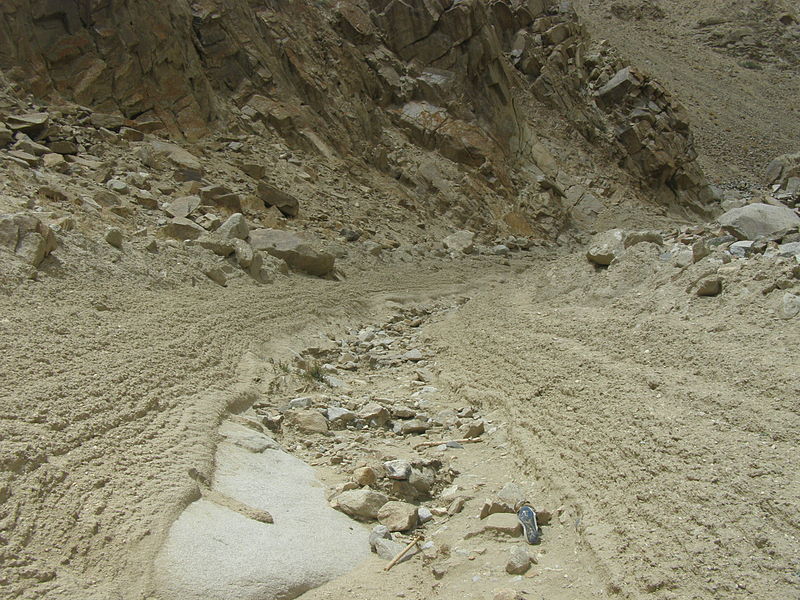
Debris flows are fast moving, liquefied landslides of mixed and unconsolidated water and debris that look like flowing concrete. They are defined by their non-newtonian flow dynamics, and behave as Bingham plastics. This characteristic can lead to the formation of levees at the margins of unconstrained debris flows as the margins of the flow freeze.
They are differentiated from mudflows by their coarser and more poorly sorted sediment load. Flows can carry material ranging in size from clay to boulders, and may contain a large amount of woody debris such as logs and tree stumps. Flows can be triggered by intense rainfall, glacial melt, or a combination of the two. Speed of debris flows can vary from 5 km/h to up to 80 km/h in extreme cases.
Volumes of material delivered by single events vary from less than 100 to more than 100,000 cubic metres. Variables considered important in debris flow initiation include slope angle, available loose sediment, and degree of land disturbance by activities such as forest harvesting.
Debris flows are often more frequent following forest and brush fires, as experience in southern California clearly demonstrates. Debris flows are extremely destructive to life and property, and claim thousands of lives world-wide in any given year.
They are a particular problem in steep mountainous areas subjected to intense rainstorms, and have received particular attention from researchers in Japan, Western USA, Western Canada, New Zealand, the European Alps, and Kazakhstan.
Features and behavior
Debris flows generally form when unconsolidated material becomes saturated and unstable, either on a hillslope or in a stream channel.
Flows are accelerated downhill by gravity and tend to follow steep mountain channels. The front, or ‘head’ of debris flow often contains a great deal of coarser material such as boulders and logs. Trailing behind this frontal lobe is the less viscous, main part of the flow that contains sand, silt and clay.
Debris flows eventually become ‘thinner’, or less viscous, muddy flood waters as they deposit their coarser components in areas of reduced gradient. Debris flows tend to move in pulses, or discrete surges, as friction or other barriers are overcome during the flow. Sometimes earlier pulses or previous debris flow deposits form levees which confine the flow until they are breached by later, larger flows.
The presence of older levees (a.k.a. lateral deposits) provides some idea of the magnitudes of previous debris flows in a particular area, and through dating of trees growing on such deposits, may indicate the approximate frequency of destructive debris flows.
This is important information for land development in areas where debris flows deposit material, known as debris fans and alluvial fans. The big debris flow or landslide is called yamatsunami (山津波), literally mountain tsunami in Japan.
Types
Other geological flows can also be described as debris flows, though are typically given more specific names. These include:
Lahar
A lahar is a debris flow related in some way to volcanic activity, either directly as a result of an eruption, or indirectly by the collapse of loose material from the flanks of a volcano. A variety of factors may trigger a lahar, including melting of glacial ice due to volcanic activity or climate change, intense rainfall on loose pyroclastic material, or the out bursting of a lake that was previously dammed by pyroclastic or glacial material. The word lahar is of Indonesian origin, but is now routinely used by geologists world-wide to describe volcanogenic debris flows.
Jökulhlaup
Video:
Photos :
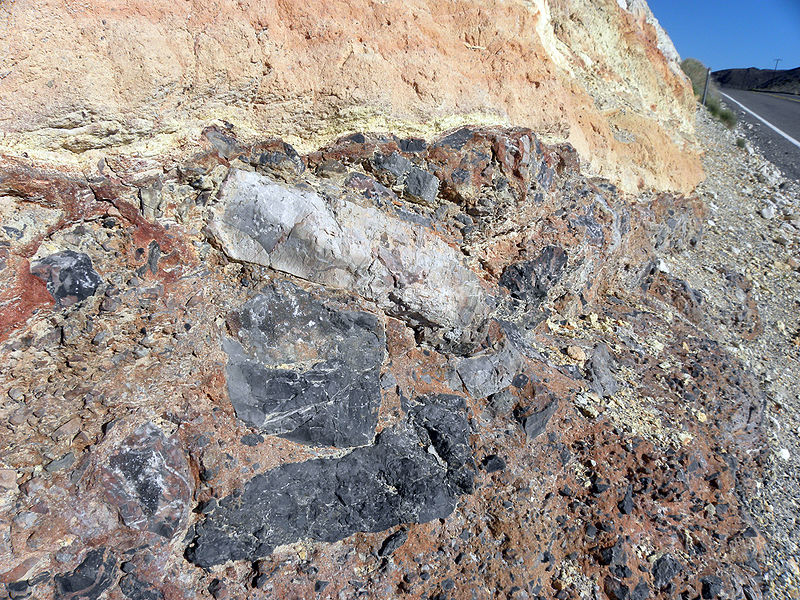
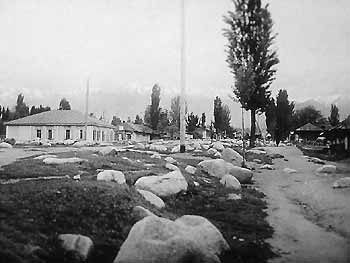
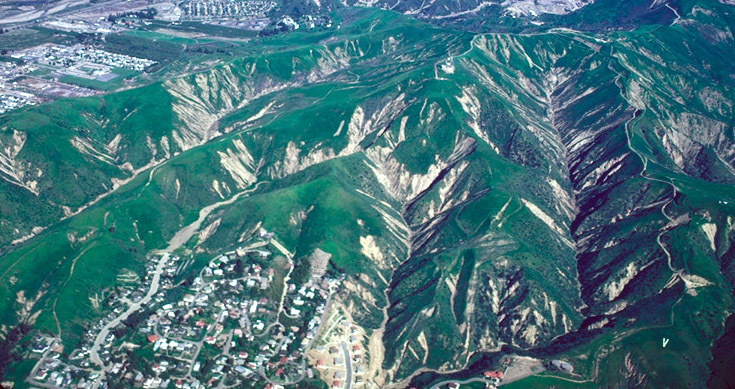
Note : The above story is reprinted from materials provided by Wikipedia.








